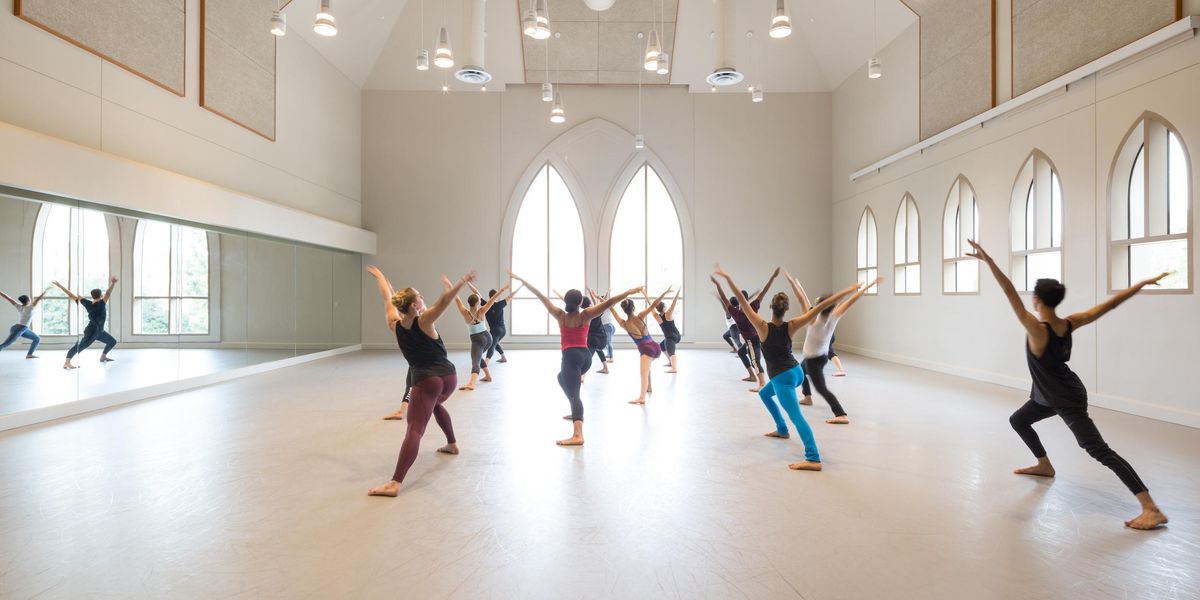Why I Dance: Maggie Thom
With her calm authority and quiet sultriness, Maggie Thom draws you in. Behind her crystalline precision in Vicky Shick’s
Not Entirely Herself, or her flung recklessness in Juliana F. May’s Discrete Body Dilemma, is an inquisitive mind that burrows voraciously into the task at hand. Thom’s early dance projects included those of her own making: At age 7, under the guidance of Ellen Robbins, she presented a piece at Dance Theater Workshop about running late, waiting for an elevator, and hailing a cab. (She’s a lifelong New Yorker.) Since earning a BA in dance and psychology from Wesleyan University, she has danced for Sara Rudner, Vicky Shick, Philippa Kaye, and Juliana F. May’s MAYDANCE, among others. She also teaches yoga to adults and music to preschool children.
I’m folding my limbs into the floor of a Broadway dance studio, breathless from the jumping and prancing pattern I was weaving a moment ago with Eleanor Smith. Ben Asriel and Kayvon Pourazar play above me, pressing into one another; Ben’s shin slips off Kayvon’s lower ribs as they go off-balance and recover. Eleanor stops suddenly, her spine whipping in response as she turns away. In this dialogue through movement we are negotiating our relationships to each other, to our inner anxieties about relating, exposing parts of ourselves that no one has seen before. We are in Juliana F. May’s rehearsal for a work that she will premiere at New York Live Arts in the winter of 2013.
There is nothing like being in a studio with intellectually engaged dancers and a choreographer who challenges you while you’re all embarking on a new creative process together. I dance because I think; I feel; and I am curious about the world! There is a misconception in our culture that dancers are purely physical beings. But the ones I am lucky to work with are not only masterful technicians and generous, funny characters but have provocative, inquisitive minds.
Dance artists are some of the smartest people I know. I spent a lot of my young dancing years, when many are training seriously, going to a math-science high school and on to a liberal arts college, Wesleyan University, where I studied literature, biology, psychology, and social theory. While I did enjoy investigating the world by writing, researching, and experimenting in a lab, it started to become clear to me that I wanted to investigate through moving. I had an unquenchable desire to understand the world through movement and through interaction with other movers in space. As I went on to major in dance and study technique, improvisation, and composition with Susan Lourie, Pedro Alejandro, and guest teachers like Sondra Loring, I discovered that dance could be as intellectually engaging as my science courses. I remember seeing Ralph Lemon’s Tree and finding an anthropology lesson within his choreography. Reading about Yvonne Rainer’s work during the Judson era in Sally Banes’ Democracy’s Body seemed a more compelling example of feminist thought than any other I read in Women’s Studies.
I have had the opportunity to learn from some incredible minds. But the community in which I feel my curiosity integrated with my desire to move is within the downtown dance community of New York City. In the years after graduating from Wesleyan, I was lucky to find my way to this community. When Sara Rudner asks me to invert a phrase of movement and then de-accumulate it—both versions in rapid succession—I am flexing my muscles but I am also doing some kind of embodied spatial reasoning. When Vicky Shick is working with nuances of weight and timing, I feel like my elbows are involved in a physics experiment with momentum.
And in Juliana F. May’s work there is the feeling that we are creating a common language that we will learn to speak over the coming months. I feel that she will draw out of us, like a playwright, the ability to speak in that language—not only to each other but to an audience. I find it thrilling to be engaged in an exchange of ideas through the form of dance.
Thom in Juliana May’s
Gutter Gate. Photo by Steven Schreiber, Courtesy Juliana May.




